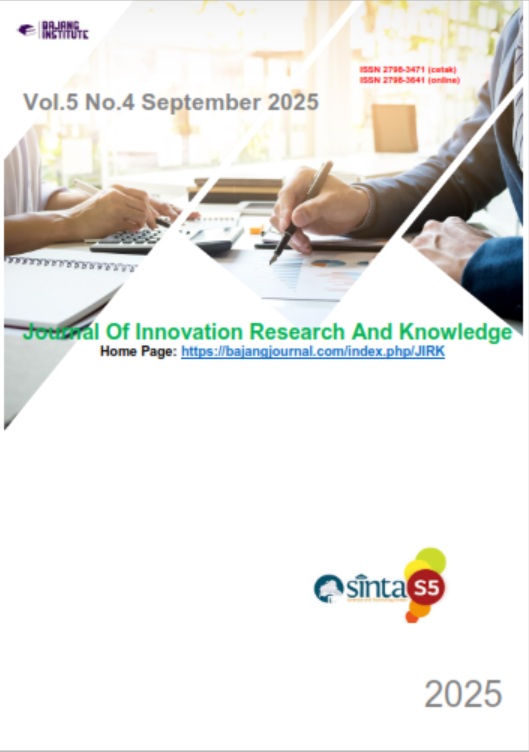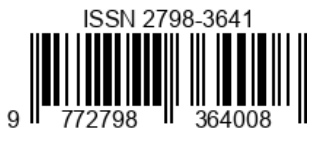STUDI KASUS TEKNIK PEMERIKSAAN RADIOGRAFI FEMUR DENGAN PENYUDUTAN ARAH SINAR MEDIOLATERAL 20 DEJARAT KLINIS FRAKTUR DI INSTALASI RADIOLOGI RSUD KOTA YOGYAKARTA
DOI:
https://doi.org/10.53625/jirk.v5i4.11206Keywords:
Radiography, Femur, FractureAbstract
Background: Femoral fracture is one of the most common bone injuries, especially in the elderly, and requires proper radiological treatment and diagnosis. Radiographic examination with Anteroposterior (AP) and Lateral projections are basic projections to assess and see abnormalities in the femur, while in the Radiology Installation of the Yogyakarta City Hospital using Anteroposterior (AP) and Lateral 200 projections. Based on these conditions, this study aims to determine the technique of radiographic examination of the femur and the reasons for using the Lateral 200 projection in cases of femoral fractures in the Radiology Installation of the Yogyakarta City Hospital. Methods: The type of research used is qualitative research with a case study approach. The research location is in the Radiology installation of the Yogyakarta City Hospital. The research was conducted from September 2024 to May 2025. Data collection was carried out through observation, interviews, documentation and literature studies. Data were collected through observation, interviews, and documentation of one radiology specialist and two radiographers with at least 5 years of work experience. The object of the study was the femur bone with clinical fractures, while the tools included observation guidelines, interview guidelines, and documentation tools. Result and Dicussion: The examination procedure begins with preparing equipment such as an X-ray machine, a 35×43 cm detector, markers, grids, and sandbags for fixation. Patient preparation includes removing metal objects in the examination area to prevent artifacts. The reason for using a 200 Lateral projection is because the patient's uncooperative condition due to pain or limited mobility often makes it difficult to perform. The 200 beam angle in the Lateral projection is an alternative that allows images from the Lateral side to be obtained without having to change the patient's position significantly. The radiograph results with a 20° Lateral projection are able to show abnormalities, although anatomically not as sharp as the true Lateral projection. Conlusions: Modified Lateral projection technique with a 20° angle has been proven effective in obtaining adequate diagnostic information in non-cooperative femoral fracture patients. This technique not only maintains the quality of the radiograph but also increases patient comfort during the procedure
References
Alan Graham Apley, L. S. (2018). Apley and Solomon’s System of Orthopaedics and Trauma (Vol. 17).
Dewi Febriyanti, Pocut Zairiana Finzia, & Sry Syahni Bancin. (2024). Analisis Pemeriksaan Hasil Gambaran Radiografi Os Femur Pada Kasus Fraktur Bagian Proksimal Dengan Menggunakan Anteroposterior (Ap) Dan Lateral. Jurnal Mahasiswa Ilmu Kesehatan, 2(2), 55–62. https://doi.org/10.59841/jumkes.v2i2.1766
Hidayat, H. (2021). Prosedur Pemeriksaan Radiografi Hip Joint Pada Kasus Fraktur Collum Femur Post Open Reduction Internal Fixation (Orif) Di Instalasi Radiologi Rumah Sakit Islam Ibnu Sina Pekanbaru. 93.
John P. Lampignano, MEd, R., & Leslie E. Kendrick, MS, R. (2018). RADIOGRAPHIC POSITIONING and RELATED ANATOMY NINTH EDITION (Vol. 17).
Long, B., Rollins, J., & Smith, B. (2016). Merrill’s Pocket Guide to Radiography E-Book.
Nasution, Z. hadiyatullah. (n.d.). TEKNIK PEMERIKSAAN RADIOGRAFI FEMUR PROYEKSI LATERAL DENGAN KLINIS FRAKTUR PADA PASIEN NON KOPERATIF DI INSTALASI RADIOLOGI RSUD KABUPATEN JOMBANG.
Oka Darmayuda Cokorda Gde. 2018. "Fraktur Neck Femur". Denpasar Unifersitas Udayana. hlm 5,6,14.
PRATIWI, A. E. (2020). ASUHAN KEPERAWATAN PADA KLIEN FRAKTUR FEMUR DENGAN NYERI DI RUANG MELATI RSUD BANGIL PASURUAN. 121.
Rasad, sjahriar.2018. Radiologi Diaognostik Jakarta: Balai Pustaka
Tjuanda, Y. (2023). Teknik Pemeriksaan Radiografi OS Femur Pada Kasus Fraktur Di Instalasi Radiologi RSU Mitra Sejati. Impression : Jurnal Teknologi Dan Informasi, 2(2), 72–75. https://doi.org/10.59086/jti.v2i2.509













